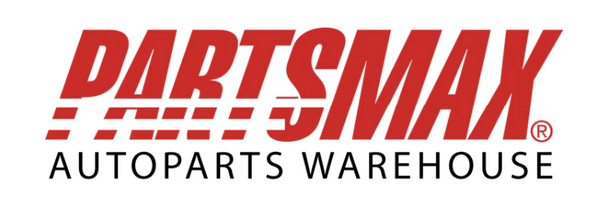Keeping Your Car Running Smoothly: Diagnosing and Fixing Common Issues
Owning a car comes with its fair share of headaches. Despite regular maintenance, common issues inevitably pop up and disrupt our busy schedules. While some car troubles require a trip to the professional mechanic, many can be diagnosed and repaired at home without fancy tools or know-how. Equipped with basic information, you can troubleshoot problems, decide what you can realistically tackle, and prevent minor issues from escalating into major repairs.
This article explores some of the most widespread car problems drivers experience, from engine trouble to electrical gremlins and suspension woes. You’ll learn not just the common signs pointing to each issue, but actionable steps to diagnose root causes and make fixes. We’ll also provide guidance on which repairs are reasonable for the average driver to make themselves and when it’s safest to hand the keys to a professional. With vigilance and a willingness to get your hands a little dirty now and then, you can add years of life to your vehicle and keep repair bills in check.
Engine Problems
The engine is the heart of your vehicle. Some typical engine issues and their fixes are:
Overheating
If your temperature gauge creeps into the red or your "check engine" light comes on, your engine may be overheating. Pull over and pop the hood immediately. Look for leaking coolant or steam rising from the engine. The top of the coolant is low. If that doesn’t solve the issue, the cooling fan, water pump, or thermostat could require repair.
Knocking or Ticking
A knocking or ticking noise from under the hood may indicate low oil or a loose component. Check the oil level first. If full, a mechanic can diagnose the specific cause, like a failing timing chain, bad valve lifters, worn piston rings, or problems with rocker arms.
Rattling
If you hear a rattling noise that changes with engine speed, the likely culprit is a heat shield that has come loose. A mechanic can easily reposition or replace the shield. More serious rattling noises could signal problems with the oil pump, piston pins, or timing chain.
Poor Performance
Is your vehicle struggling to accelerate? Does it sputter or stall? These are signs of clogged fuel filters or injectors. Replacing dirty filters is a relatively inexpensive DIY fix. Using a fuel injector cleaner can also help remove deposits that restrict proper fuel flow.
Battery and Electrical Issues
Electrical components require routine care and maintenance. Here are some common battery and electrical issues:
Dead Battery
If your battery dies, especially more than once, it likely needs to be replaced. Most batteries last 3-5 years. Cold weather and frequently short trips also shorten battery life. Replace it with one that meets the specifications for your vehicle. Properly cleaning and tightening the battery cables can also help extend battery life.
Dimming Headlights
Dimming headlights usually indicate a failing alternator or loose alternator belt. Have your charging system tested to confirm. A mechanic can replace components if needed.
Electrical Gremlins
Flickering lights, malfunctioning power windows or radios, and other glitches may signal a loose wiring connection. Inspect visible wires and connectors for damage. Worn insulation and corrosion should be repaired. If that doesn’t solve it, there may be unseen damaged wires requiring professional diagnosis and repair.
Brake Problems
Safe braking is a top priority. Address any brake issues immediately.
Squealing
Squealing or scraping noises while braking suggest worn brake pads. Have a mechanic inspect pad thickness and change them if below specifications. This simple service extends the life of pads and rotors.
Vibration
A vibration or shaking in the steering wheel when braking likely means warped rotors. Resurfacing or replacing rotors rectifies the issue and prevents damage to other components. Pulsation when braking can also indicate problems with brake calipers, master cylinders, or ABS modules.
Spongy Pedal
Soft or spongy brake pedals make it difficult to slow your vehicle and indicate problems with the hydraulic brake system. Air trapped in the lines, leaks, worn discs, and issues with the brake booster or master cylinder are possible causes. Identifying and repairing the specific issue is critical.
Suspension and Steering Concerns
Your steering and suspension take a beating from potholes and all forms of road debris. Fix these common problems to keep your ride stable and safe:
Pulling
If your vehicle persistently pulls left or right, an alignment is needed. Worn tie rods or ball joints require replacement and realignment. Uneven or overinflated tires can also cause pulling.
Wander
Does your car wander or drift from side to side? That signals worn shocks or struts. Have them inspected and replace any that are leaking or damaged.
Vibration
Vibration when hitting bumps or around turns is a telltale sign of bad wheel bearings. Get those replaced before they fail. Out-of-balance or bent wheels can also cause vibration issues.
Noise
Squeaking from the front suspension while turning or over bumps means you need new bushings or ball joints. Knocking noises indicate worn sway bar links. Have worn parts replaced to regain a smooth, quiet ride.
Conclusion
Learning to diagnose basic car problems can help you catch issues early, avoid breakdowns, and decide what repairs you can tackle yourself. But if safety systems like brakes or complex issues like transmissions present problems, rely on qualified mechanics to make the proper repairs. Invest a little time and money into routine maintenance and your vehicle will operate reliably for years to come.
And when you are ready to get quality aftermarket auto parts be sure to check our online store or if you are in South Florida visit our warehouse.



